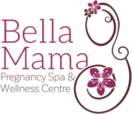What are the Best Positions for Labour?

Facts in this blog post about the best positions for labour are verified by BirthWorks International founder Cathy Daub P.T.
You’re feeling those first labour pains and your contractions are regular. You’re sure it’s finally time to meet your baby. YEEEEEHAA. Excitement, nerves, happiness, even a bit of stress are all normal feelings at this time. Is there anything you can do to help feel a little more prepared at this time (assuming here you have not booked in a c-section)? It can definitely help to become familiar with the best positions for labour.
Different labour positions can help ease your discomfort, as well as encourage your baby to move downwards and get into an optimal position. Experiment with different positions throughout your labour and you will find out what works best for you. Keep in mind that different positions may work better for you at different stages.
Here are six of the best positions for labour:
1. Sitting
Sit cross-legged on a bed or the floor, or sit with legs astride on a chair, swiss ball, birthing stool or toilet. You could face the back of a chair and lean forwards to help ease back pain. Whatever is available and works best for you.
Pros:
- Upright positions help to open your pelvis
- Restful position
- Gravity will encourage your baby to move downwards
- If baby’s head is pushing on your spine it may help him/her to move forward
- Swiss ball positions can encourage dilation. Rocking or swaying from side to side may also help baby move into a better position
- A good position for someone to apply pressure on your back
Tip 1: If on a swiss ball, keep your pelvis forward and have someone or something to support in front.
Tip 2: If sitting on a hard chair, place a small pad underneath for comfort.
2. Hands and Knees / Kneeling
Position yourself as if you were washing the floor, with your arms vertical below your shoulders and body resting on your arms. Try swaying, rocking or circling your hips and tilting your pelvis to help ease your pain and guide baby.
Tweak this position by kneeling and resting your upper body on a chair with pillows on top or over a swiss ball. A cushion under your knees may also help you to be more comfortable.
Pros:
- Reduces back pain by taking pressure off the spine
- Keeps pelvis tipped forward allowing more room in which the baby can move
- Excellent anatomical position to birth any baby but especially breech babies
3. Standing
Stand up and lean into a wall. Alternatively, lean with your arms and upper chest into the end of a bed or high furniture. Rock from side to side during the contraction. You could tweak this position by lunging – stand facing forward with one foot on a stool or chair. Lunge between contractions, or during contractions, whichever provides you the most comfort.
Pros:
- Movement helps labour to progress by shifting hips side to side
- Upright positions encourage baby to move downward
4. Side-lying
Lie comfortably on your left side with lower leg bent and upper leg supported by someone back and up to keep the pelvis forward.
Pros:
- Takes pressure off your internal organs
- Nice restful position
- Can be used if you’ve had an epidural
- Can help slow down a too-fast birth
Tip: You can support the upper leg up and back with a support system of pillows but make sure the pelvis is tipped forward.
5. Semi Squatting
Have two people sit on a bed with their feet supported on chairs. The woman in labour positions herself with her back to them and places her arms on theirs, dropping down into a half squat during a contraction.
Pros:
- Helps with dilation
- Opens up the pelvis by up to 30% more compared with lying on your back
- Can help your baby move around and down towards the birth canal
6. Slow Dancing
Been a while since you slow danced? Here’s your perfect opportunity to get your boogie on. Well kind of… Stand up and drape your arms around your partner’s neck, leaning into their chest or shoulder. Get them to put their arms around your lower back or hips, with fingers interlocked so you are secure. Rock side to side together and feel the romance in the room (haha).
Pros:
- Upright positions encourage baby to move downward
- Movement helps labour to progress
All the very best with using these best positions for labour. Breathe slowly and deeply through contractions, focus on meeting your little munchkin and keep your eye on the prize. You got this Mama!
We have obstetric TENS machines available to hire as a drug free pain relief option for your labour. To book one in or simply find out more, click here or call us on 09 445 7591.
Attend the BirthWorks workshops in Auckland and Christchurch this November to learn more. Visit www.birthworks.org for more info and to register.

